The gap between cheese imports and exports continues to widen. Julia Glotz asks whether this should be cause for concern and looks at what producers are doing to redress the balance
If Britain has a long history of importing cheese, that doesn't make the prevalence of foreign products on our shelves any less of a talking point - particularly when they account for well over half the British cheese market (at 400,000 tonnes versus a total market volume of 700,000) and rose 5% in the first eight months of this year [Defra and DairyCo].
But it's all too easy to get distracted by the topline figures. Imports of Cheddar, the most high-profile cheese imported into the UK, are actually down, from 84,056 tonnes in the first eight months of 2009 to 77,112 tonnes in the same period this year [DairyCo]. And, while the Continental cheeses sub-category (excluding blues) is growing faster than the total cheese category, performance varies significantly across different cheese types and brands.
Parmesan is the fastest growing by value (up 15.2% to £39m over the past year, according to Kantar), for instance, but volume sales have actually slipped 2.1%. Meanwhile, soft cheeses (other than Mozzarella, Brie and Camembert) are down 0.9% in value, despite 6.7% volume growth.
So how much of a threat do imported cheeses really pose? And are British cheesemakers sleepwalking into being overrun and outperformed by their foreign competitors?
On the Cheddar side, the UK market is increasingly about brands rather than own-label. Although the combined value of standard-tier and budget own-label Cheddar is still narrowly larger than that of branded Cheddar (£702.8m compared with £613.9m, according to Kantar), growth of branded now easily outperforms own-label (up 15.8% in value, while own-label standard is down 1.1% and own-label budget has slumped 18.5%). Received wisdom may suggest Cheddar imports largely end up in supermarket own-label lines (particularly at the budget end), not least because there are few examples of branded Irish, New Zealand or Australian Cheddars on British supermarket shelves.
But the growing importance of brands does not necessarily mean home-produced fare will be increasingly insulated from the pressures of imports. The market for Continental speciality cheeses shows British consumers will buy into imported brands where they offer added value, although there too the picture is mixed as far as the performance of individual brands is concerned.
Bel Group's Boursin has been performing strongly, for instance, and is currently worth £12m, up 16% year-on-year, with Lactalis McLelland's Président portfolio, best known for its Brie and Camembert, growing 11% year-on-year to £16m [Nielsen 52w/e 2 October]. Leerdammer, Port Salut and Apetina, on the other hand, are down a respective 8%, 9% and 4% year-on-year.
These are just the Continental cheeses the general public knows and understands as imported there's a whole raft of other cheeses that many think are always domestically produced, such as Cheddar, but are not. Although 'imported cheese' typically evokes images of Continental specialities, the largest volume of imports, with about 140,000 tonnes in 2009, is 'soft and fresh', which includes cream cheese (mainly from Kraft's factories in Europe) and fromage frais, which the EU defines as cheese in its statistics.
Processed cheese accounts for an additional 41,000 tonnes, a large proportion of which will again have come out of Kraft factories. As Nigel White of the British Cheese Board points out: "We don't have a particularly large processed cheese industry in this country."
Confusing the picture further, many of the cheeses that are imports, such as Edam and Gouda, actually punch above their weight when it comes to consumer awareness. These two cheeses are good examples of how imported cheese can be high-profile without necessarily coming into the market in huge volumes, argues White.
"It's a ubiquitous pairing that can be found in most major supermarkets, yet sales are just 13,000 tonnes out of a total cheese market of 700,000 tonnes." Similarly, Brie and Camembert imports have been around the 12,000-tonne mark for the past four years "people think they must be huge, but in reality it's 12,000 tonnes out of 700,000".
Although the threat has arguably been overplayed in some areas, that's not to say British cheese does not face strong competition from imports in others. "In a way, we've always been under siege from imports," says Richard Clothier, managing director of Wyke Farms. Imports are competing with British fare at both ends of the market, he adds the commoditised end most commonly associated with Irish imports, and the premium end, where high-quality speciality cheeses from France, Italy or Spain threaten to push Britain off the Christmas cheeseboard.
It's the latter Clothier is most worried about. "The cheaper end has always been there and will always be there because it depends on price, but at the premium end, vintage British Cheddar makers have to make sure we get heard over the increasing noise from around Europe," he says. "Whereas the premium fixture used to be Cheddar and good Brie, and some Stilton at Christmas, now it's tending to be more great types of cheese from all sorts of locations."
Certainly in Cheddar there appears to be a near-term prospect of greater volumes coming in. The UK imported about 130,000 tonnes of Cheddar in 2009 [Defra and DairyCo], 90,000 tonnes of it from the Republic of Ireland. Many observers believe agriculture will play a key part in the Republic's economic recovery, and the Irish government's recent announcement that it would increase its milk output by 50% by 2020 has certainly played a role in putting the issue of imports on the agenda for British cheesemakers.
The prospect of greater volumes of Irish Cheddar coming into the UK could be "a concern", says DairyCo market intelligence manager David Swales. There is already pressure on manufacturers to source cheese as cheaply as possible, he says, "and Ireland has a manufacturing sector already well set up to supply cheap Cheddar".
It's a characterisation that somewhat riles Carl Ravenhall, managing director of Adams Foods, the new company formed by the merger of Pilgrims Choice-maker North Downs Dairy and Ireland's Kerrygold. He believes talking about Irish Cheddar as if it were synonymous with 'cheap' misses the point. "They are competitive, but they are not winning on price alone," he says.
In fact, part of Ireland's success in exporting cheese to the UK lies in the reliability of its supply, he says. A vast percentage of Irish milk is exported, meaning longer-life dairy products such as cheese have to be a priority for producers. That isn't necessarily the case in the UK.
"Certain UK sellers will only sell if they have surpluses, whereas in Ireland there is plentiful, year-round supply," says Ravenhall. "This is a real threat for the UK. Irish investment will lead to more efficient methods of production and if the British industry is not competitive, these concerns will only grow."
Others are less convinced. The relative cheapness of Irish Cheddar may be debatable, but there is little disagreement that a lot of the cheese coming out of the Republic is mild at a time when the UK market for mild Cheddar is shrinking. Mild accounted for about 60% of retail Cheddar sales in the 1990s, but its share now is closer to 25%, British Cheese Board's White points out. "If people are going to put more Cheddar into this market, it won't be mild Cheddar. And Ireland would need to completely rethink its business operations if it was to suddenly change from being a supplier of mild Cheddar to a supplier of mature and extra-mature cheese."
That's not impossible, but it would require major investment. Plus, it would put Irish producers head to head with heavyweight brands such as Cathedral City and Seriously, which dominate the market for mature and extra-mature Cheddar in the UK. No easy task, reckons White.
"They can do it, but the resources they will need to put in are immense because they are playing catch-up and somebody has to fund that," he says.
And the harsh reality is that NPD is not all they will need to fund. Heavy promotional activity has become a fact of life on the cheese fixture and not just with regard to British Cheddars. Continental cheeses are getting in on the act, which is a key reason they have been able to boost volume sales. Lactalis McLelland, which makes British Cheddar brand Seriously and imports Continental brands such as Galbani and Président, sits on both sides of the import debate.
Martin Rickenback, group marketing director, says the amount of Continental cheese sold on deal has surged. In Brie and Camembert, Coeur de Lion has been promoting heavily, selling 80% of its Camembert and 58% of its Brie on promotion in the year to 4 September 2010 [Nielsen].
Adding to the pressure on British speciality cheeses is a retail system that is stacked against small territorial cheesemakers getting listings in the major multiples, believes Kevin Bellamy, dairy consulting director at food and drinks consultancy Zenith.
There is too much substitution of British speciality cheeses with Continental cheeses, with Emmental from Germany, Switzerland and France pushing out British hard and semi-hard cheeses such as Double Gloucester, while Danish blue is competing head-on with Stilton, as well as Shropshire and Cornish Blue, the latter fresh from taking top place at the World Cheese Awards.
Country Larder's Brie is frequently cited as an example of a British speciality cheese clawing back share from Continental rivals but all too often British territorials face an uphill struggle getting listings, says Bellamy. He believes UK producers should be more switched on to being globally competitive to ensure their products remain well positioned against imports.
So what strategies should British cheesemakers deploy to stand the best chance of competing with foreign imports?
Clearer country-of-origin labelling will play an important role, believe some. "Falling milk supply in the UK has exposed the market to opportunities from importers. This could lead some of the UK-based brands which are traders, not producers to buy imported product to put in their branded packs," says Dairy Crest external affairs director Arthur Reeves.
First Milk marketing director Paul Murray, like many of his peers, is in favour of clearer labelling, which, he says, should focus on the country of manufacture. Current labelling laws require suppliers to flag up only where the product is packed rather than where it was produced, but the industry, under the auspices of Defra, has agreed a new set of principles to make it easier for consumers to identify where the cheese (as well as other types of fresh food) they are buying comes from.
The growing importance of provenance goes beyond simply being British. Over the past few years, brands with specific regional heritage have ramped up their credentials in a bid to add value and create a point of difference against more generic cheese brands. Dairy Crest, for instance, this year launched its Davidstow own-label line which is produced in Cornwall as a stand-alone brand to tap into the growing trend for regional provenance (see box).
Davidstow Cheddar had previously been sold only as an own-label 'named creamery' line. First Milk, too, has ramped up work on its regional brand, The Lake District Cheese Company, which got a packaging facelift at the end of August and a £1m communications campaign aimed at conveying its regional credentials on a national basis.
But not everyone is convinced by drive for British or the case for new labelling rules. "I'm not sure people care much," says Wyke Farms' Clothier. Particularly at the 'bottom end', consumers are driven by price rather than considerations for provenance, he argues, meaning new labelling is likely to make little difference to how competitive British cheese is against imports.
Ravenhall at Adams Foods goes further, saying the very concept that shoppers should need to be steered towards British cheese is an "insult to consumers' intelligence" and often the result of misplaced snobbery about foreign products. Instead, the UK cheese industry should take a look at why importers are able to compete with domestic Cheddar, despite the added import and logistics costs they incur.
Underinvestment in UK Cheddar manufacturing is part of the answer, Ravenhall believes, with only a few producers Dairy Crest and its £50m investment in its Davidstow creamery, for example willing to put serious money into updating facilities. "We've seen major investment in liquid milk processing and bottling, and in cheese-cutting and packaging, but nothing really in the bit in the middle," he argues.
The argument doesn't hold much sway with Jim Begg, director-general of Dairy UK, who believes the UK has no need to hide behind its overseas peers when it comes to state-of-the-art facilities. British cheesemaking has a fundamentally positive story to tell and producers have been investing in efficiency, he says.
As markets become increasingly deregulated, few would disagree that the UK cheese market will continue to become more international. Producers will face a choice in how they respond by competing on price, investing in brands, ramping up provenance credentials, or even looking beyond British shores. Doing nothing will not be an option strong foreign brands and competitively priced commodity imports will eat into domestic producers' share given the chance.
But if Begg is right, British cheesemakers should be confident they are in a strong position to mount a convincing challenge. The ball is in their court now.
Focus On Cheese
If Britain has a long history of importing cheese, that doesn't make the prevalence of foreign products on our shelves any less of a talking point - particularly when they account for well over half the British cheese market (at 400,000 tonnes versus a total market volume of 700,000) and rose 5% in the first eight months of this year [Defra and DairyCo].
But it's all too easy to get distracted by the topline figures. Imports of Cheddar, the most high-profile cheese imported into the UK, are actually down, from 84,056 tonnes in the first eight months of 2009 to 77,112 tonnes in the same period this year [DairyCo]. And, while the Continental cheeses sub-category (excluding blues) is growing faster than the total cheese category, performance varies significantly across different cheese types and brands.
Parmesan is the fastest growing by value (up 15.2% to £39m over the past year, according to Kantar), for instance, but volume sales have actually slipped 2.1%. Meanwhile, soft cheeses (other than Mozzarella, Brie and Camembert) are down 0.9% in value, despite 6.7% volume growth.
So how much of a threat do imported cheeses really pose? And are British cheesemakers sleepwalking into being overrun and outperformed by their foreign competitors?
On the Cheddar side, the UK market is increasingly about brands rather than own-label. Although the combined value of standard-tier and budget own-label Cheddar is still narrowly larger than that of branded Cheddar (£702.8m compared with £613.9m, according to Kantar), growth of branded now easily outperforms own-label (up 15.8% in value, while own-label standard is down 1.1% and own-label budget has slumped 18.5%). Received wisdom may suggest Cheddar imports largely end up in supermarket own-label lines (particularly at the budget end), not least because there are few examples of branded Irish, New Zealand or Australian Cheddars on British supermarket shelves.
But the growing importance of brands does not necessarily mean home-produced fare will be increasingly insulated from the pressures of imports. The market for Continental speciality cheeses shows British consumers will buy into imported brands where they offer added value, although there too the picture is mixed as far as the performance of individual brands is concerned.
Bel Group's Boursin has been performing strongly, for instance, and is currently worth £12m, up 16% year-on-year, with Lactalis McLelland's Président portfolio, best known for its Brie and Camembert, growing 11% year-on-year to £16m [Nielsen 52w/e 2 October]. Leerdammer, Port Salut and Apetina, on the other hand, are down a respective 8%, 9% and 4% year-on-year.
These are just the Continental cheeses the general public knows and understands as imported there's a whole raft of other cheeses that many think are always domestically produced, such as Cheddar, but are not. Although 'imported cheese' typically evokes images of Continental specialities, the largest volume of imports, with about 140,000 tonnes in 2009, is 'soft and fresh', which includes cream cheese (mainly from Kraft's factories in Europe) and fromage frais, which the EU defines as cheese in its statistics.
Processed cheese accounts for an additional 41,000 tonnes, a large proportion of which will again have come out of Kraft factories. As Nigel White of the British Cheese Board points out: "We don't have a particularly large processed cheese industry in this country."
Confusing the picture further, many of the cheeses that are imports, such as Edam and Gouda, actually punch above their weight when it comes to consumer awareness. These two cheeses are good examples of how imported cheese can be high-profile without necessarily coming into the market in huge volumes, argues White.
"It's a ubiquitous pairing that can be found in most major supermarkets, yet sales are just 13,000 tonnes out of a total cheese market of 700,000 tonnes." Similarly, Brie and Camembert imports have been around the 12,000-tonne mark for the past four years "people think they must be huge, but in reality it's 12,000 tonnes out of 700,000".
Although the threat has arguably been overplayed in some areas, that's not to say British cheese does not face strong competition from imports in others. "In a way, we've always been under siege from imports," says Richard Clothier, managing director of Wyke Farms. Imports are competing with British fare at both ends of the market, he adds the commoditised end most commonly associated with Irish imports, and the premium end, where high-quality speciality cheeses from France, Italy or Spain threaten to push Britain off the Christmas cheeseboard.
It's the latter Clothier is most worried about. "The cheaper end has always been there and will always be there because it depends on price, but at the premium end, vintage British Cheddar makers have to make sure we get heard over the increasing noise from around Europe," he says. "Whereas the premium fixture used to be Cheddar and good Brie, and some Stilton at Christmas, now it's tending to be more great types of cheese from all sorts of locations."
Certainly in Cheddar there appears to be a near-term prospect of greater volumes coming in. The UK imported about 130,000 tonnes of Cheddar in 2009 [Defra and DairyCo], 90,000 tonnes of it from the Republic of Ireland. Many observers believe agriculture will play a key part in the Republic's economic recovery, and the Irish government's recent announcement that it would increase its milk output by 50% by 2020 has certainly played a role in putting the issue of imports on the agenda for British cheesemakers.
The prospect of greater volumes of Irish Cheddar coming into the UK could be "a concern", says DairyCo market intelligence manager David Swales. There is already pressure on manufacturers to source cheese as cheaply as possible, he says, "and Ireland has a manufacturing sector already well set up to supply cheap Cheddar".
It's a characterisation that somewhat riles Carl Ravenhall, managing director of Adams Foods, the new company formed by the merger of Pilgrims Choice-maker North Downs Dairy and Ireland's Kerrygold. He believes talking about Irish Cheddar as if it were synonymous with 'cheap' misses the point. "They are competitive, but they are not winning on price alone," he says.
In fact, part of Ireland's success in exporting cheese to the UK lies in the reliability of its supply, he says. A vast percentage of Irish milk is exported, meaning longer-life dairy products such as cheese have to be a priority for producers. That isn't necessarily the case in the UK.
"Certain UK sellers will only sell if they have surpluses, whereas in Ireland there is plentiful, year-round supply," says Ravenhall. "This is a real threat for the UK. Irish investment will lead to more efficient methods of production and if the British industry is not competitive, these concerns will only grow."
Others are less convinced. The relative cheapness of Irish Cheddar may be debatable, but there is little disagreement that a lot of the cheese coming out of the Republic is mild at a time when the UK market for mild Cheddar is shrinking. Mild accounted for about 60% of retail Cheddar sales in the 1990s, but its share now is closer to 25%, British Cheese Board's White points out. "If people are going to put more Cheddar into this market, it won't be mild Cheddar. And Ireland would need to completely rethink its business operations if it was to suddenly change from being a supplier of mild Cheddar to a supplier of mature and extra-mature cheese."
That's not impossible, but it would require major investment. Plus, it would put Irish producers head to head with heavyweight brands such as Cathedral City and Seriously, which dominate the market for mature and extra-mature Cheddar in the UK. No easy task, reckons White.
"They can do it, but the resources they will need to put in are immense because they are playing catch-up and somebody has to fund that," he says.
And the harsh reality is that NPD is not all they will need to fund. Heavy promotional activity has become a fact of life on the cheese fixture and not just with regard to British Cheddars. Continental cheeses are getting in on the act, which is a key reason they have been able to boost volume sales. Lactalis McLelland, which makes British Cheddar brand Seriously and imports Continental brands such as Galbani and Président, sits on both sides of the import debate.
Martin Rickenback, group marketing director, says the amount of Continental cheese sold on deal has surged. In Brie and Camembert, Coeur de Lion has been promoting heavily, selling 80% of its Camembert and 58% of its Brie on promotion in the year to 4 September 2010 [Nielsen].
Adding to the pressure on British speciality cheeses is a retail system that is stacked against small territorial cheesemakers getting listings in the major multiples, believes Kevin Bellamy, dairy consulting director at food and drinks consultancy Zenith.
There is too much substitution of British speciality cheeses with Continental cheeses, with Emmental from Germany, Switzerland and France pushing out British hard and semi-hard cheeses such as Double Gloucester, while Danish blue is competing head-on with Stilton, as well as Shropshire and Cornish Blue, the latter fresh from taking top place at the World Cheese Awards.
Country Larder's Brie is frequently cited as an example of a British speciality cheese clawing back share from Continental rivals but all too often British territorials face an uphill struggle getting listings, says Bellamy. He believes UK producers should be more switched on to being globally competitive to ensure their products remain well positioned against imports.
So what strategies should British cheesemakers deploy to stand the best chance of competing with foreign imports?
Clearer country-of-origin labelling will play an important role, believe some. "Falling milk supply in the UK has exposed the market to opportunities from importers. This could lead some of the UK-based brands which are traders, not producers to buy imported product to put in their branded packs," says Dairy Crest external affairs director Arthur Reeves.
First Milk marketing director Paul Murray, like many of his peers, is in favour of clearer labelling, which, he says, should focus on the country of manufacture. Current labelling laws require suppliers to flag up only where the product is packed rather than where it was produced, but the industry, under the auspices of Defra, has agreed a new set of principles to make it easier for consumers to identify where the cheese (as well as other types of fresh food) they are buying comes from.
The growing importance of provenance goes beyond simply being British. Over the past few years, brands with specific regional heritage have ramped up their credentials in a bid to add value and create a point of difference against more generic cheese brands. Dairy Crest, for instance, this year launched its Davidstow own-label line which is produced in Cornwall as a stand-alone brand to tap into the growing trend for regional provenance (see box).
Davidstow Cheddar had previously been sold only as an own-label 'named creamery' line. First Milk, too, has ramped up work on its regional brand, The Lake District Cheese Company, which got a packaging facelift at the end of August and a £1m communications campaign aimed at conveying its regional credentials on a national basis.
But not everyone is convinced by drive for British or the case for new labelling rules. "I'm not sure people care much," says Wyke Farms' Clothier. Particularly at the 'bottom end', consumers are driven by price rather than considerations for provenance, he argues, meaning new labelling is likely to make little difference to how competitive British cheese is against imports.
Ravenhall at Adams Foods goes further, saying the very concept that shoppers should need to be steered towards British cheese is an "insult to consumers' intelligence" and often the result of misplaced snobbery about foreign products. Instead, the UK cheese industry should take a look at why importers are able to compete with domestic Cheddar, despite the added import and logistics costs they incur.
Underinvestment in UK Cheddar manufacturing is part of the answer, Ravenhall believes, with only a few producers Dairy Crest and its £50m investment in its Davidstow creamery, for example willing to put serious money into updating facilities. "We've seen major investment in liquid milk processing and bottling, and in cheese-cutting and packaging, but nothing really in the bit in the middle," he argues.
The argument doesn't hold much sway with Jim Begg, director-general of Dairy UK, who believes the UK has no need to hide behind its overseas peers when it comes to state-of-the-art facilities. British cheesemaking has a fundamentally positive story to tell and producers have been investing in efficiency, he says.
As markets become increasingly deregulated, few would disagree that the UK cheese market will continue to become more international. Producers will face a choice in how they respond by competing on price, investing in brands, ramping up provenance credentials, or even looking beyond British shores. Doing nothing will not be an option strong foreign brands and competitively priced commodity imports will eat into domestic producers' share given the chance.
But if Begg is right, British cheesemakers should be confident they are in a strong position to mount a convincing challenge. The ball is in their court now.
Focus On Cheese


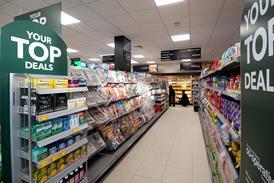
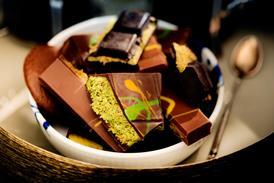






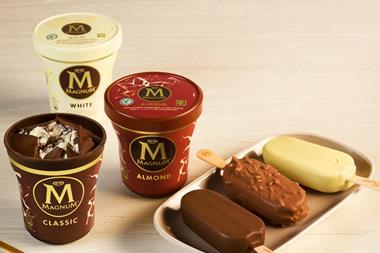
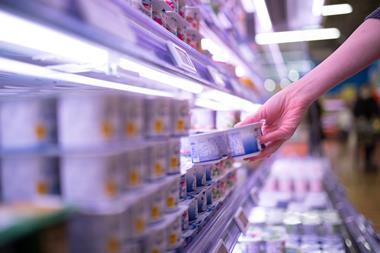
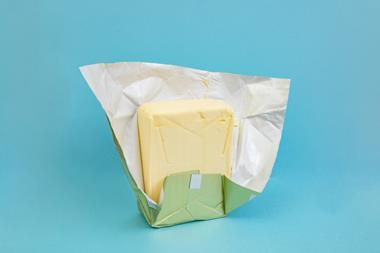
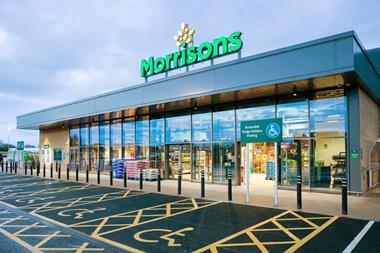
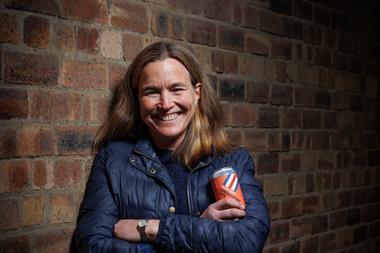




No comments yet